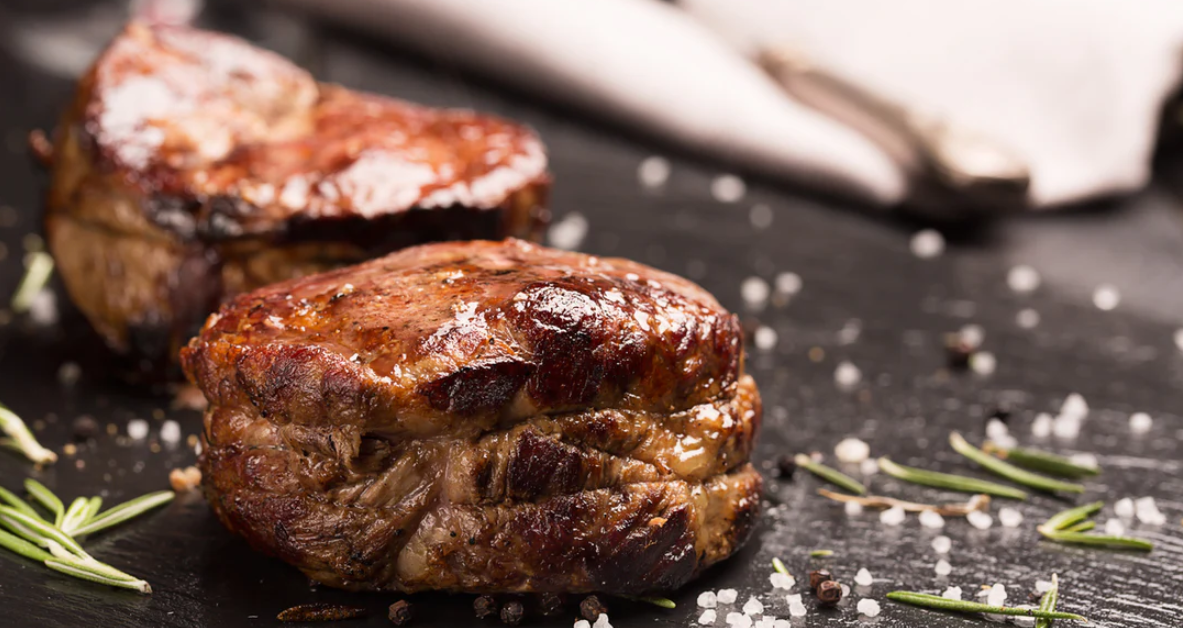How to Reverse Sear a Steak for Tender and Juicy Results

There’s an undeniable satisfaction that comes from knowing that you’re serving your loved ones 100% grass-fed and grass-finished, regeneratively-farmed beef. When it comes to steak, it doesn’t get any better.
But that feel-good sensation will quickly turn to disappointment if the beef that arrives on your dinner plate is far too rare, or you overcooked it and the result is extra dry and chewy.
Thankfully, the culinary stars on our team have taught us all the secret to the perfectly tender and juicy steak: reverse searing.
What is reverse searing?
Reverse searing steak begins by slowly cooking meat in the oven at a low temperature. After removing your steak from the oven and allowing it to rest for a few minutes, the final phase of cooking involves searing both sides of the steak on a hot grill or cast-iron skillet.
This technique is referred to as "reverse" searing because it inverts the conventional method of searing meat first and then finishing it in the oven.
Similar to sous vide, the benefits of reverse searing steaks are:
- More even cooking
- Better control of internal temperature
- Perfectly browned crust
- Deeper flavor and tender meat, due to the low and slow cooking method
What tools do you need to reverse sear a steak?
- A reliable meat thermometer is the only way to be certain that the steak is cooked to your desired level of doneness. A digital meat thermometer with a probe that can be inserted into thick cuts of steak is our recommendation - easy to read the temperature without needing to cut the steak.
- Your oven! The key to even cooking and juice distribution is cooking the steak at a low temperature, and slowly. Either a conventional or convection oven can do the job.
- A baking sheet or oven-safe pan with a wire rack. This lets air circulate around the steak, which supports even cooking.
- Don’t forget salt and pepper. Season your steak generously before cooking.
- Tongs to handle the steak will keep your fingers burn-free.
- Butter or oil for searing.
- A hot cast-iron skillet or griddle are ideal for retaining heat well and developing a lovely crust on the steak.
7 steps to reverse sear a steak
1. If you’ve ordered from Grass Roots, you’ll receive flash frozen, grass-fed steaks, which we recommend defrosting in the fridge. Once defrosted, let the steak come to room temperature (~30 minutes) before cooking.
2. Preheat the oven to 250°F (120°C). Place the steak on a wire rack over a baking sheet and season it with salt and pepper.
3. Cook the steak in the oven until it reaches 125-130°F for medium rare. Use a meat thermometer for best results.
4. Remove the steak from the oven. Let it rest for 10-15 minutes to allow the juices to redistribute.
5. While the meat is resting, heat up a cast-iron skillet on high heat. When fully heated, add a small amount of olive oil to the skillet.
6. Place your steak in the hot skillet for 1-2 minutes. You’ll see a crust form on the outside. Use tongs to flip the steak and sear the other side for another 1-2 minutes.
7. Remove the steak from the heat and let it rest for a few more minutes before serving.

How long do you reverse sear a steak?
How long you’ll need to reverse sear your steak depends on how thick the cut is and your desired level of doneness.
We generally prefer medium rare, which requires an internal temperature of 130-135°F and usually takes 30 minutes to an hour in the oven, followed by a rest, a couple minutes of searing, and one final rest before serving.
Contrary to popular belief, searing doesn’t actually lock in the juices of a piece of meat. The caramelizing effect of a sear adds wonderful flavor, but on the downside, cooking meat quickly at a high temperature typically means that the meat doesn’t cook evenly.
The ‘low and slow’ first phase of reverse searing gives the meat time to cook through evenly, which helps its juices to distribute throughout the meat. Then, when the meat is seared at high heat, the crispy crust locks this moisture in.
What’s the ideal reverse sear steak temperature?
As we mentioned, perfectly medium rare is our preference, but if you’re partial to a different level of doneness, here are our internal temperature cooking guidelines based on recommendations from the USDA:
- Rare: 120-125°F
- Medium-rare: 130-135°F
- Medium: 135-145°F
- Medium-well: 145-155°F
- Well-done: 155°F and above
Be sure to use a meat thermometer to check the internal temperature of your steak.
Reverse seared steak recipes
Now that you know how to reverse sear a steak, you can replace the cooking instructions on any thicker cut of steak with the steps we outlined above.
Here are 2 recipes that would work beautifully with the reverse sear method:
New York Strip, Bearnaise Butter, and Proper Pommes Frites
More than just the grass-fed and grass-finished steak, this recipe includes detailed instructions for preparing the classic French sides of pommes frites and a creamy Bearnaise butter.
Swap the traditional searing instructions for your new reverse searing skills and let the dinnertime ooh’s and aah’s begin.
Filet Mignon with Cured Asparagus and Lemon Brown Butter
If you’re looking for a recipe that feels like it’s straight out of a sophisticated four star restaurant, this is it. Tender spears of asparagus are quickly cured to perfection and pair well with the refreshing lemon brown butter reduction.
Once again, swap the recipe’s steak instructions for the reverse searing process outlined above and you’re all set.





